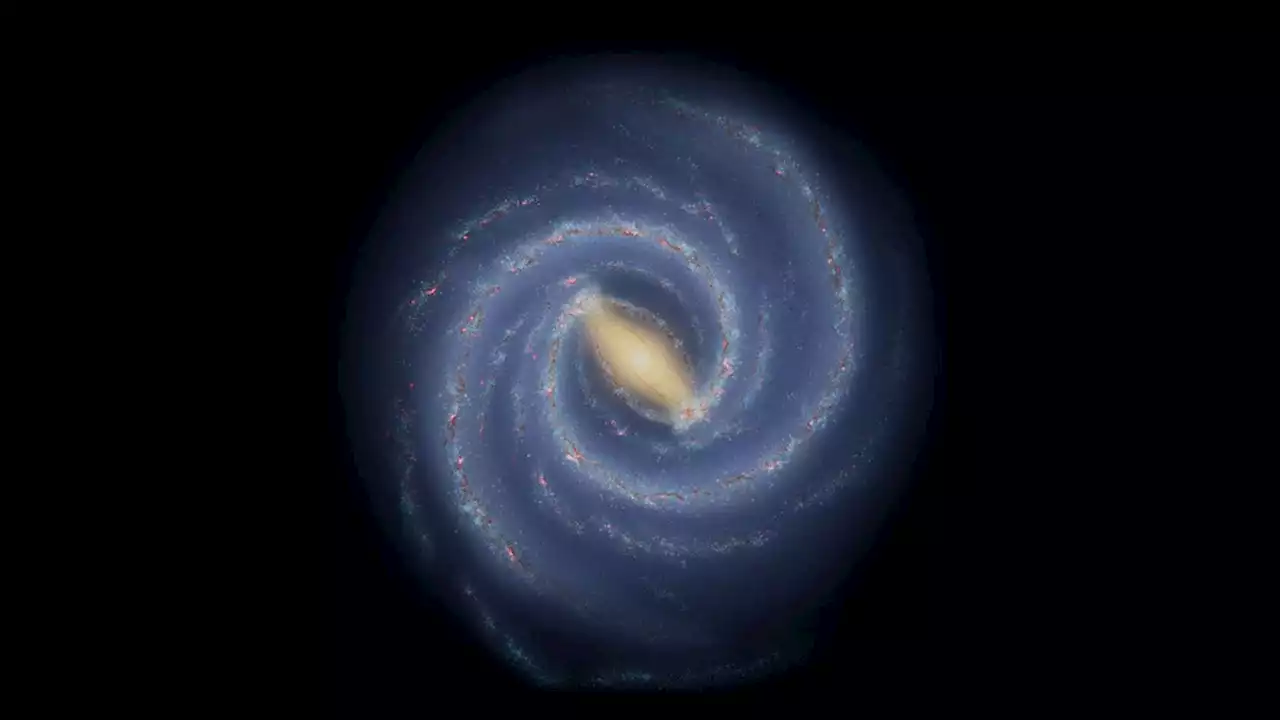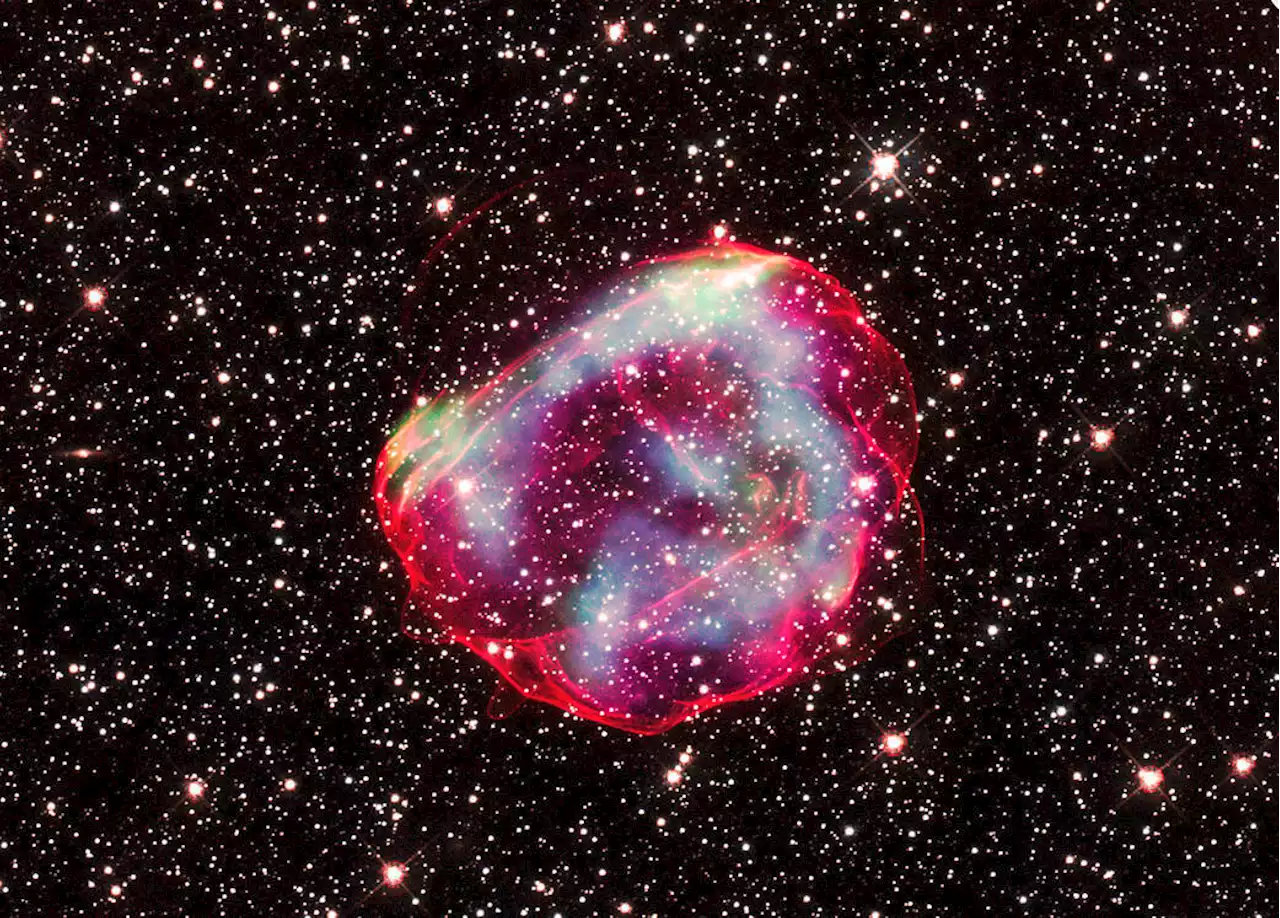Astronomers wind back the clock to determine the timeline of a stellarexplosion NASA AAS_Publishing
. After reaching a critical mass, either by pulling matter from a companion star or merging with another white dwarf, the star underwent a thermonuclear explosion and was destroyed. Scientists use this type of supernova, called a Type Ia, for a wide range of scientific studies ranging from studies ofSNR 0519 is located in the Large Magellanic Cloud, a small galaxy 160,000 light-years from Earth.
The researchers compared Hubble images from 2010, 2011, and 2020 to measure the speeds of material in the blast wave from the explosion, which range from about 3.8 million to 5.5 million miles per hour. If the speed was toward the upper end of those estimated speeds, the astronomers determined that light from the explosion would have reached Earth about 670 years ago, or during the Hundred Years' War between England and France and the height of the Ming dynasty in China.
However, it's likely that the material has slowed down since the initial explosion and that the explosion happened more recently than 670 years ago. The Chandra and Spitzer data provide clues that this is the case. Astronomers found the brightest regions in X-rays of the remnant are where the slowest-moving material is located, and no X-ray emission is associated with the fastest-moving material.
These results imply that some of the blast wave has crashed into dense gas around the remnant, causing it to slow down as it traveled. Astronomers may use additional observations with Hubble to determine more precisely when the time of the star's demise should truly be set., and a preprint is available online.
Norge Siste Nytt, Norge Overskrifter
Similar News:Du kan også lese nyheter som ligner på denne som vi har samlet inn fra andre nyhetskilder.
 Earth's perilous journey through the Milky Way's spiral may shape the planet's geologyEvery 200 million years, high-energy comets may pelt our planet as it passes through our galaxy's spiral arms.
Earth's perilous journey through the Milky Way's spiral may shape the planet's geologyEvery 200 million years, high-energy comets may pelt our planet as it passes through our galaxy's spiral arms.
Les mer »
 A Stray Population of Mysterious Water Worlds May Have Just Been RevealedThe Milky Way galaxy could be a much wetter place than we knew.
A Stray Population of Mysterious Water Worlds May Have Just Been RevealedThe Milky Way galaxy could be a much wetter place than we knew.
Les mer »
 'We can find life outside the solar system in 25 years', researcher saysNew instruments are currently being developed that will supercharge our search for life across the Milky Way galaxy.
'We can find life outside the solar system in 25 years', researcher saysNew instruments are currently being developed that will supercharge our search for life across the Milky Way galaxy.
Les mer »
 Build Back Better Lives Again, Now With Green HydrogenLouisiana is getting a green hydrogen hub, powered by offshore wind and funded by the Build Back Better Regional Challenge.
Build Back Better Lives Again, Now With Green HydrogenLouisiana is getting a green hydrogen hub, powered by offshore wind and funded by the Build Back Better Regional Challenge.
Les mer »
